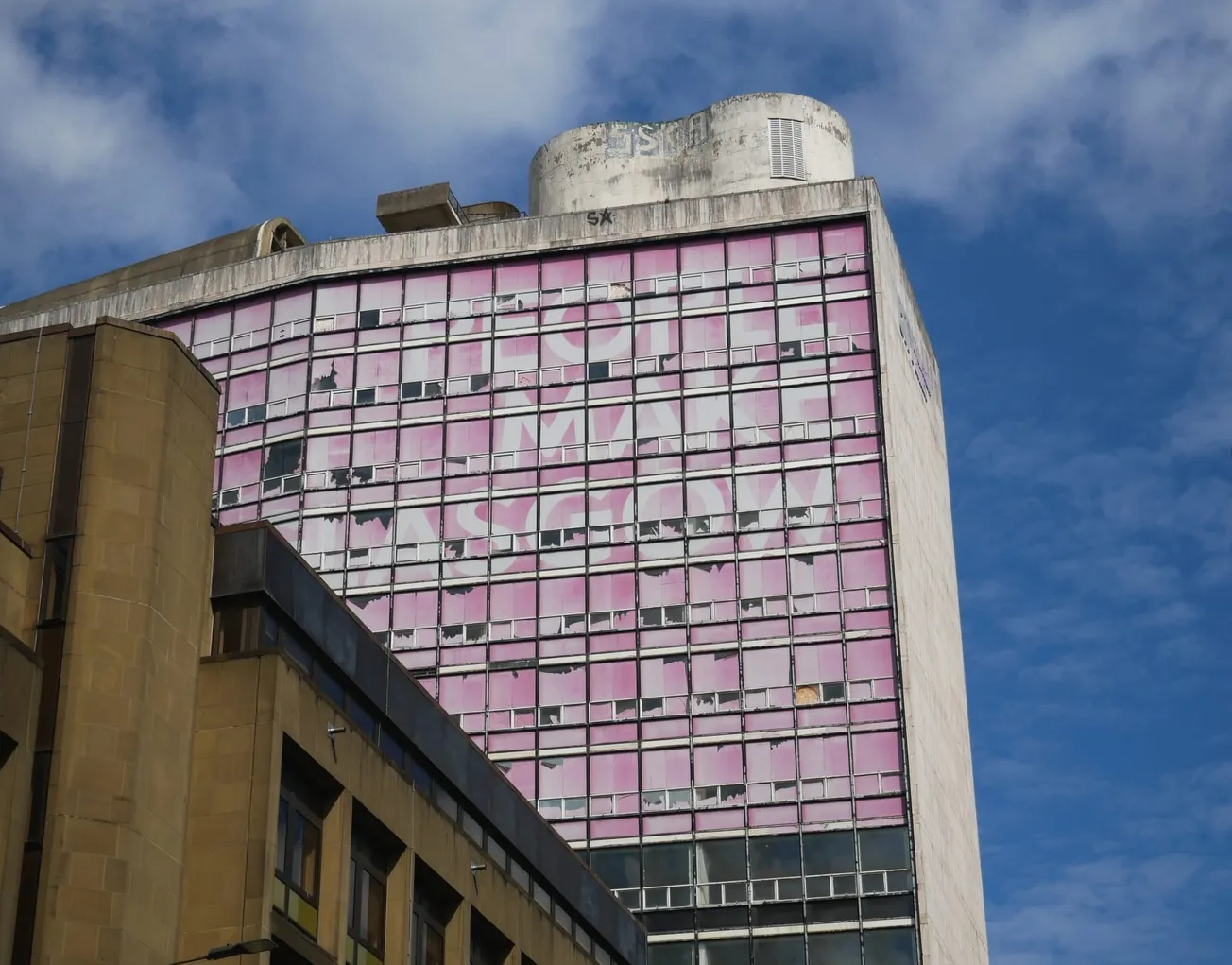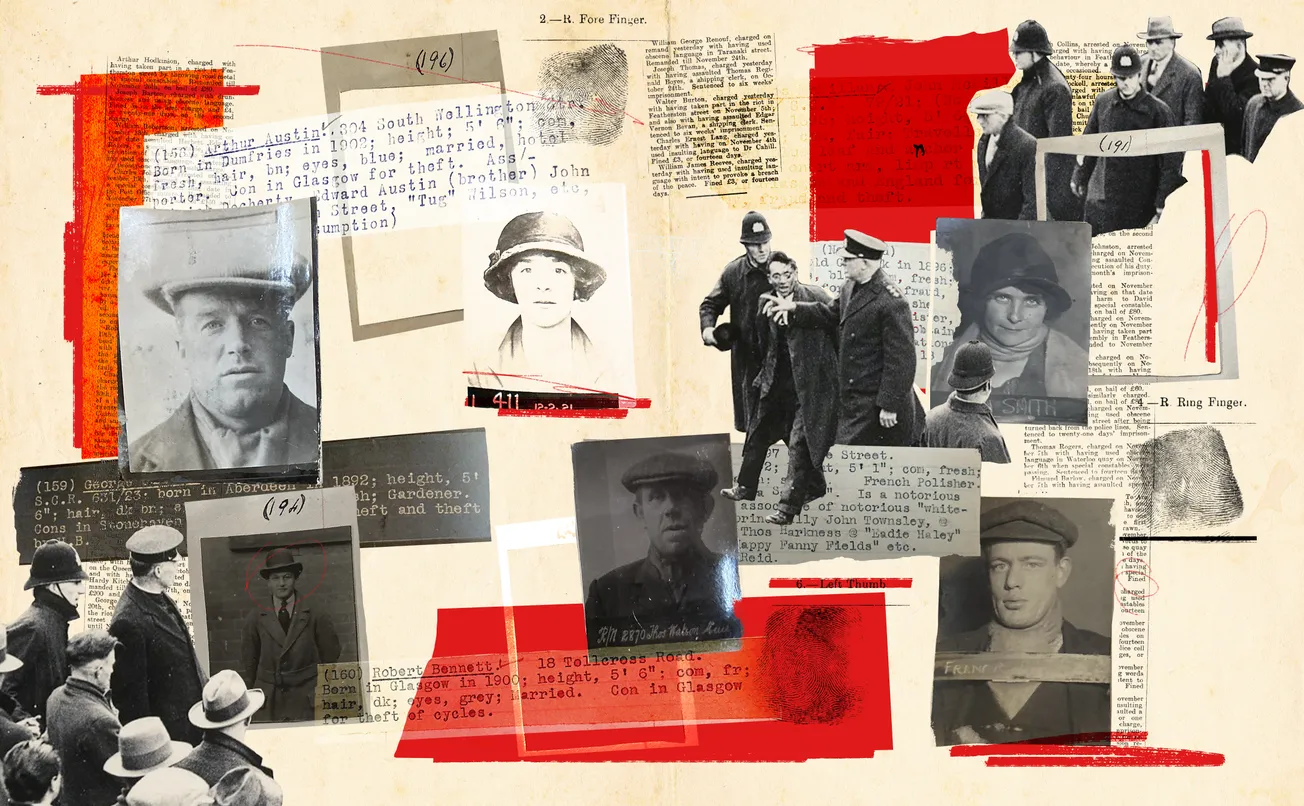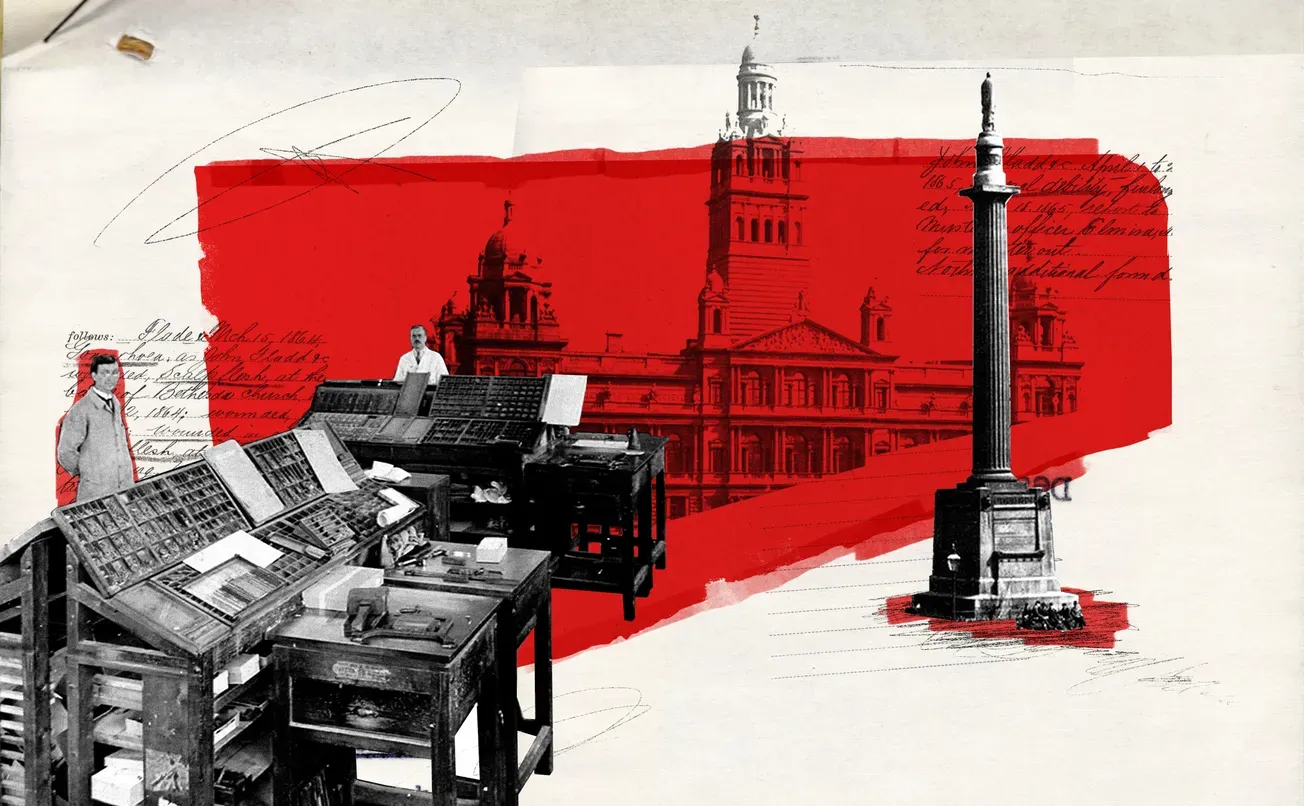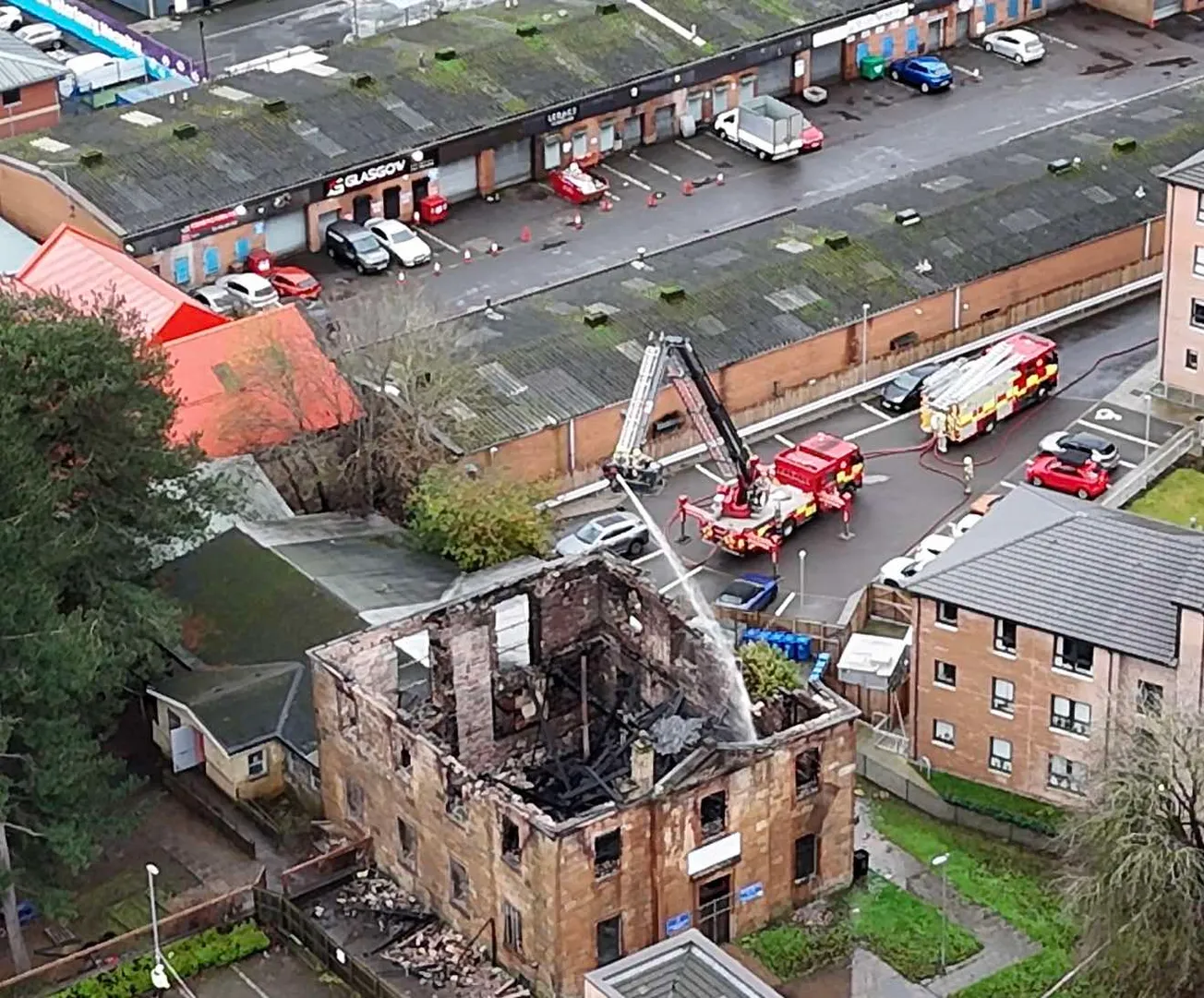We've got news: we're hiring! The Bell is looking for a Glasgow-based editor. We've had an amazing start; in just six months, we've racked up nearly 600 paying subscribers and over 8000 free readers. Now we're seeking someone who knows the city inside out to lead our exciting next phase. If that's you, or someone you know, click the button below for more details.
I’m on North Hanover Street, craning my neck and squinting my eyes trying to see inside Glasgow’s boarded-up behemoth — the Met Tower. I’m calling it that because it’s easier and it’s plastered on the fenced-off exclusion zone around the base of the building, but you may know it as the College of Building and Printing, Glasgow Metropolitan College, or even the ‘People Make Glasgow’ Building. You know the one.
The Met Tower is now one of Glasgow’s most recognisable buildings. Adorned with a slogan as divisive as its Brutalist stylings, the tower looms over George Square. According to Reddit, you can see all the way over to Arran from its top floors. I wouldn’t know; I’ve never been inside, and I don’t know if I’ll ever get the chance.
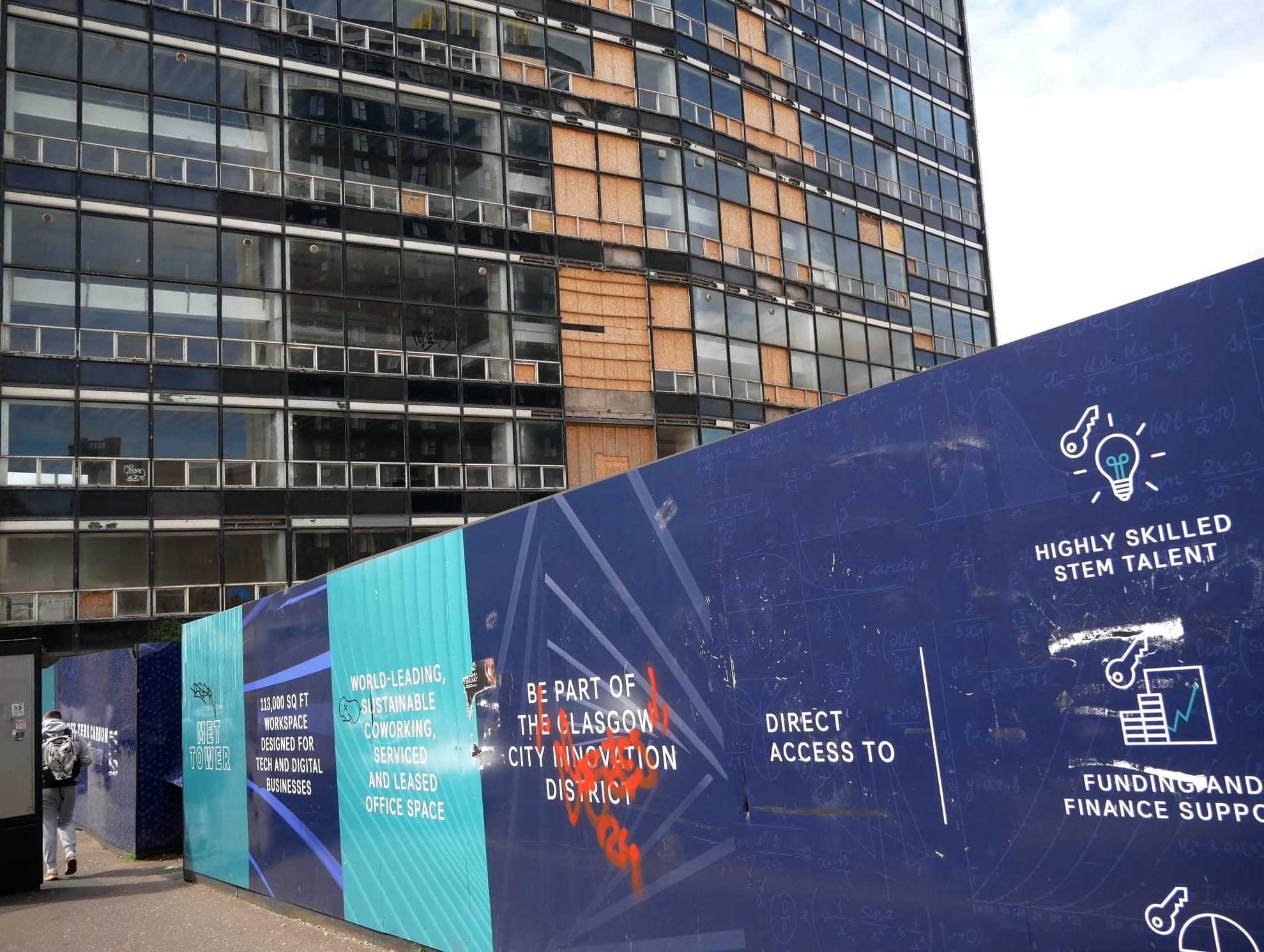
The Met Tower is in stasis. It has lain entirely empty for the last nine years, save for some surveyors, tradespeople, and daring graffiti artists who’ve managed to tag risky spots. During that time its appearance has deteriorated. “It’s a waste”, is how a young woman described it to me as she and her friend headed towards Queen Street. To them, it’s an “eyesore” and has been “left to rot”.
I ask a young man with blonde hair and braces what he thinks of it. “Angular”, he says shortly, squinting into midday light. He’s right. I’ve been trying to take some pictures for this piece and have found it very hard to get the lines straight. My camera tells me when it’s level but my eyes disagree. The angles that the sides of the Met Tower create with the pavement as it slopes away are confusing. The north and south facades aren’t perpendicular with the sides. It’s all a bit overwhelming.
As I’m poking my lens through the gate to the compound, a man confidently approaches me in shorts and tee-shirt, cap and shades. “Are you a street photographer?” he asks in a Jamaican accent. I’m not; I sense disappointment from his quarter. But he’s game to talk about the Met. He’d been peering up at the tower a lot this very morning. “It’s a marvel. Its magnitude takes my breath away”. He gets reflective: “it reminds me of parts of humanity. One minute they want to blow something up, the next they want to preserve it.”
To blow up or to preserve? That’s Glasgow’s perennial question when it comes to its built heritage. In the Met Tower’s case, the answer was, initially: ‘preserve and repair'. But multi-million pound plans to renovate the building as a tech hub suddenly fell through last year. What went wrong, and what’s next for Glasgow’s most recognisable building?
The golden days
The Met Tower was forward-thinking when it was erected. And it wasn’t called the Met Tower. Built between 1961 and 1964 and designed by Peter Williams of Wylie, Shanks, and Underwood, 60 North Hanover Street was initially part of the Stow College of Building. The design was hailed as a fine example of modernist architecture in the Le Corbusier style. Funky Brutalist shapes on the roof, and concrete beetle legs gave it character. These, along with chequered facades and sleek glass fenestration, eventually would win the tower B-listed status in 2002.
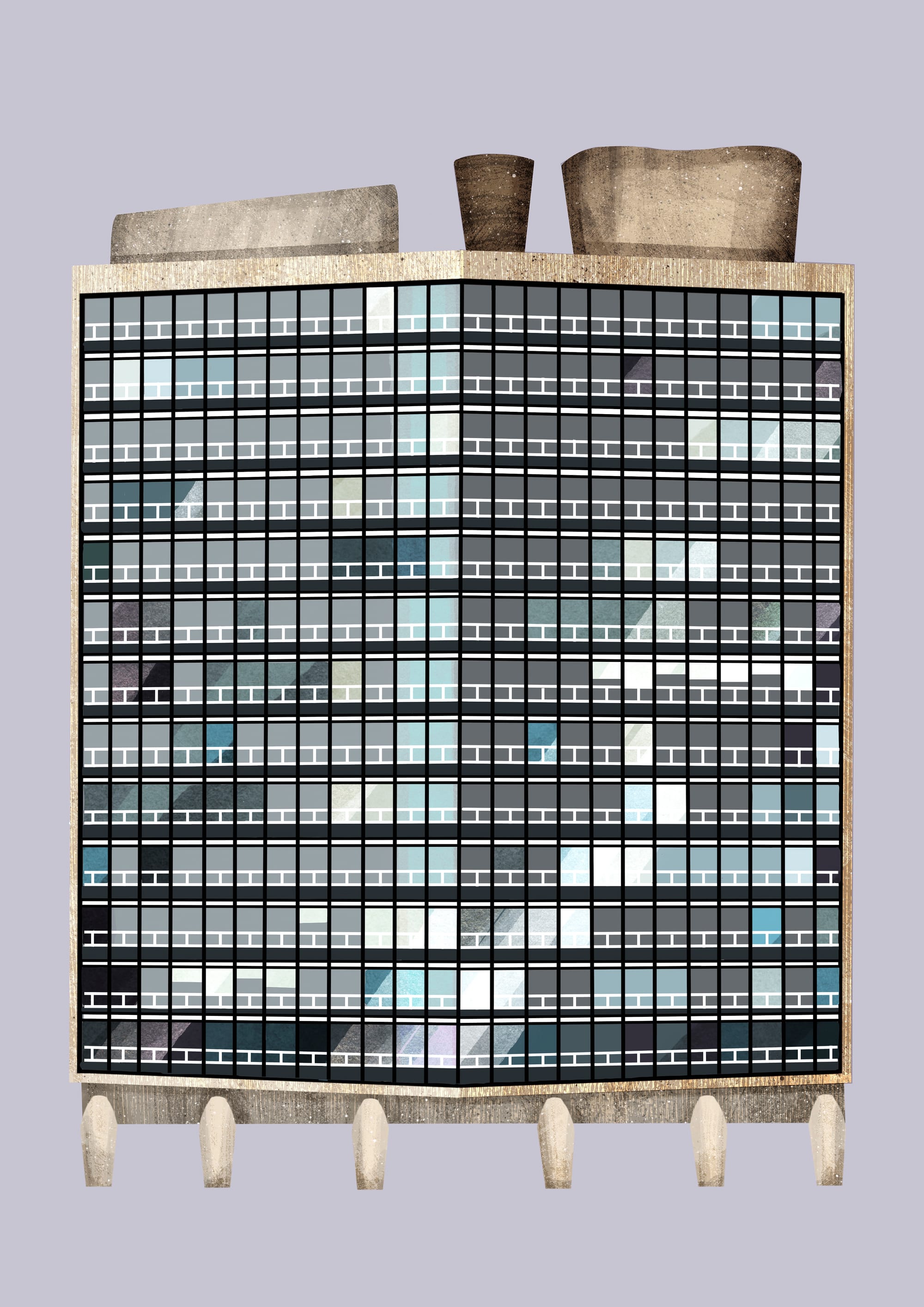
But before any listings, the tower became home to the College of Building and Printing in 1972 — probably still the usage it’s most commonly known for. After three decades, the institution became Glasgow Metropolitan College (where the ‘Met’ prefix comes from) for five years from 2005 until a 2010 merger with Central College Glasgow and the Glasgow College of Nautical Studies birthed City of Glasgow College. For six more years, the Met Tower found a new lease of life as the nucleus of Scotland’s largest college. But then CGC prioritised their Riverside Campus, which would accommodate so many students as to make wee Metty redundant. They ultimately decided all they could do with it was to sell.
Shortly before it was abandoned, the council opted to give the building one last makeover. As part of 2014’s Commonwealth Games preparations, a giant hot pink slogan, screaming the words ‘PEOPLE MAKE GLASGOW’ (rendered in contra vision so the soon-to-be relocated students could see out) was wrapped across the top seven stories of the south facade. Iconic at first, the stunt is now a sad metaphor. For the last nine years, none of the people who ‘make’ Glasgow have been able to access the Met Tower and that pink banner looks more tattered by the day.
It has changed hands several times in the interceding years. Property development company Osborne+Co bought it in 2019, promising to create 1200 jobs by creating Grade A offices and a hotel, but sold it again three years later. The current owners are Bruntwood SciTech, a company whose 2022 purchase of the Met Tower (for £16.2m) incited that deadly emotion: hope.
Bruntwood planned a £60m refurb of the tower, envisaging it as a tech innovation megahub. They have form, with 11 similar sites already established across the UK, in cities like Manchester. Bruntwood says they create “ecosystems of innovation”, and that Glasgow was the next on their list.
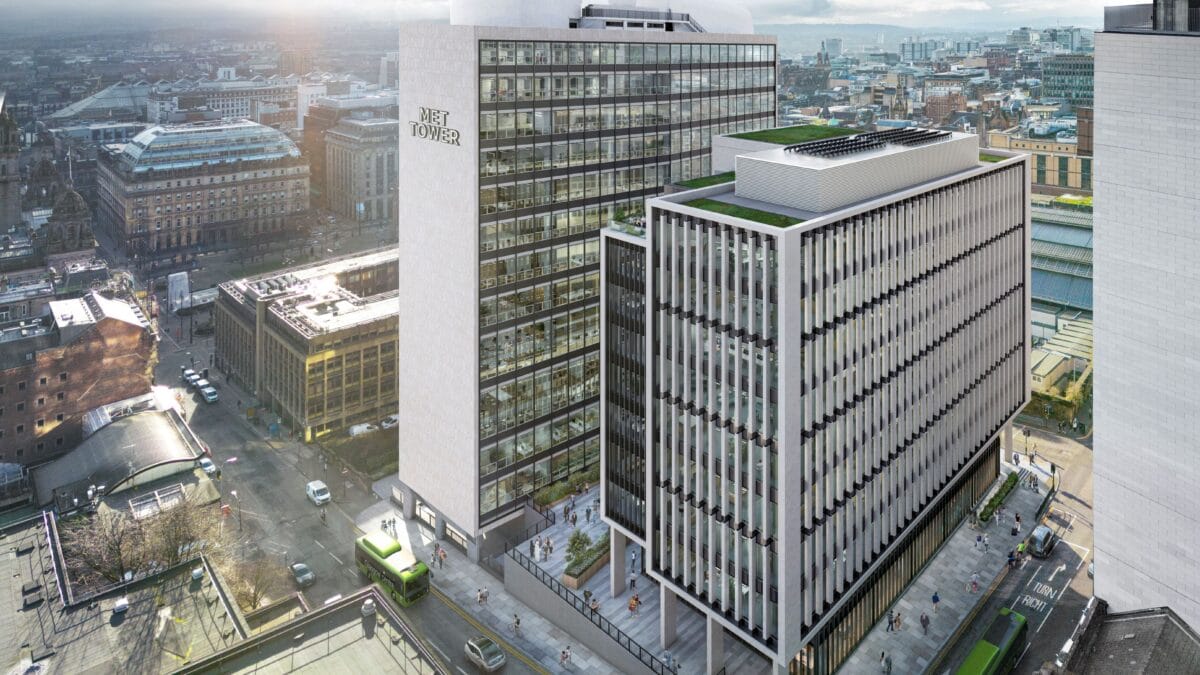
Planning permission was granted in November 2023, and so work began. Dismantling this, reinforcing that. But a mere six months later in May 2024, an announcement was made: the project was cancelled. Bruntwood said that inflation and high interest rates meant that their vision to create an office workspace was “not feasible in the current climate.”
So here we are. Me, at 60 North Hanover Street looking at the plywood swaddling the building. The Met Tower gazing serenely over Glasgow as people glare back with ‘scornful view’, as Rabbie Burns once put it. Despite its massive heft, the tower looks vulnerable. According to one source with knowledge of Glasgow’s old buildings, the holes in the side of the Met Tower leave it exposed. Another Storm Eowyn or fire-raising youth could spell the end for this structure.
People in the know are fairly tight-lipped about its future. There are murmurs that another sale is on the cards. Over the course of many calls, I heard that money — millions of it — was allegedly made available to Bruntwood SciTech by Scottish Enterprise, the government agency, to help with the development. For whatever reason, they didn’t take it. The Bell has reached out to the company for further comment.
The other — unspeakable — option also looms like a dark shadow: demolition. As we’ve seen with Africa House, demolishing a listed building is possible if the owner can demonstrate that it’s not financially viable, no longer of significance, incapable of repair, or that demolition would benefit the public. It seems unlikely that the Met Tower would meet much of this criteria yet — it’s in a prime location and was only built 60 years ago. But if a new development is proposed that the council considers to be of greater public benefit… it’s all to play for.
In the meantime the sunlight dazzles me as I try to make out the words “People Make Glasgow” wrapped onto the south face. They’re so faded they blend into the white sheen of the windows. On this busy street in the centre of Scotland’s metropolis, I’m stood still, gawking at the scale of this building while hundreds of people pass by as if it’s not even there. They’re used to a slow fade. They’re used to broken promises.
Have you ever been inside the Met Tower? What are your memories of the building? And what do you think its future should look like? Let us know in the comments.
Comments
How to comment:
If you are already a member,
click here to sign in
and leave a comment.
If you aren't a member,
sign up here
to be able to leave a comment.
To add your photo, click here to create a profile on Gravatar.

